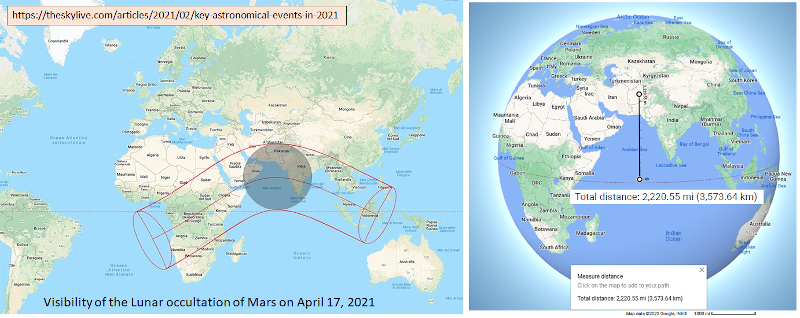We have to confess that we occasionally send friends a link to “let me Google that for you” when they ask us something that they could have easily found online. Naturally, if someone asked us how big the moon is, we’d ask Google or another search engine. But not [Prof Matt Strassler]. He’d tell you to figure it out yourself and he would then show you how to do it.
This isn’t a new question. People have been wondering about the moon since the dawn of human civilization. The ancient Greeks not only asked the question, but they worked out a pretty good answer. They knew approximately how big the Earth was and they knew the moon was far away because it is seen over a very wide area. They also knew the sun was even further away because the moon sometimes blocks the sun’s light in an eclipse. Using complex geometry and proto-trigonometry they were able to work out an approximate size of the moon. [Matt’s] method is similar but easier and relies on the moon occluding distant stars and planets.
[Matt] explains that a distant sphere illuminated by a distant light source will cast a shadow on a plane about the size of the sphere. What’s more, is that anyone on the plane in the shadow who can’t see the light source must be in the shadow, which allows you to measure the shadow, and that gives an approximation of the sphere’s size. For this to work, the light source needs to be at least ten times further away from the plane than the sphere is. The further away the light source is, the lower the error in the final number.
Obviously, there are a few sources of error trying to use this method where the light source is a distant star, the moon is the sphere, and the Earth is the plane. Most obviously, the Earth is not flat. However, it is so large that small parts of it are nearly flat, especially towards the center. The moon is small compared to the Earth, so it is simple to arrange for the shadow to not be at, for example, the poles.
Of course, you also need to ask a lot of people if they can see the star in question. Luckily, people already do this. So you could, for the sake of demonstration, use the projected maps for a future occultation or you can read off historical data from previous observations.
Using some historical data and eyeballing Google maps, [Matt] came up with 3,600 km as an estimate of the moon’s diameter. The accepted number based on precise measurements is 3,474.8 km. Not too far off. There’s another method at the end of the post that uses the sun as a reference if you want to double-check. That method yielded an estimate of 3,554.49 km, also very close.
If you’d rather take an up-close look at the Moon, there is video enhanced from the old moon missions to watch. You’ll need to know the size, though, before you build your orrery.
















I believe you mean “occulting” not occluding stars. Sorrythanks
Fun article.
To occlude is an astronomical word, used to mean, fairly enough, to hide ;-)
What concerns me is when and how much it’s said to “wobble”, and what impact that will have on tidal currents here.
IIRC, the size of the Earth was measured by the difference in shadows at noon at places about 500 miles apart North-South. The the Moon was then measured by comparing the arc of the Earth’s shadow on the Moon during an eclipse.
One source of error is the Sun is much much bigger than the Earth and the show cast is therefore smaller.